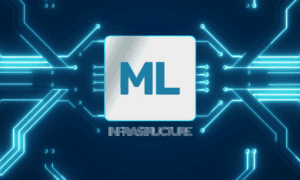Introduction
The debate surrounding the integration of Artificial Intelligence (AI) revolves around a central question: friend or foe? This inquiry, pivotal in discussions about the transformative impact of AI on cybersecurity, reveals a nuanced relationship. As we explore the intricacies of this alliance, it becomes apparent that AI operates on a spectrum, functioning both as a steadfast ally and a potential adversary in the ongoing battle against cyber threats.
The Rise of AI in Cybersecurity
AI has evolved into an indispensable tool for cybersecurity professionals. Its unparalleled processing speed empowers security systems to detect and respond to threats in real-time by analyzing vast amounts of data. Machine learning algorithms, a subset of AI, continuously learn from patterns and anomalies, enhancing predictive capabilities. This proactive approach marks a departure from traditional cybersecurity, which struggles to keep pace with the rapidly evolving tactics of cybercriminals.
Friend: Enhancing Threat Detection
AI’s significant contribution to cybersecurity lies in its prowess in threat detection. Machine learning algorithms excel at identifying subtle patterns indicative of malicious activity within the vast sea of daily-generated data. This heightened accuracy enables cybersecurity systems to discern genuine threats from false alarms, streamlining the response process and minimizing the risk of overlooking critical issues.
Additionally, AI’s analysis of historical data enables the identification of emerging threats before they escalate. Recognizing evolving attack patterns, cybersecurity systems equipped with AI can preemptively fortify defenses, creating a robust shield against potential breaches. This proactive stance is crucial in the dynamic landscape of cyber threats, where a delayed response can have severe consequences.
Foe: The Potential for Adversarial Exploitation
While AI enhances cybersecurity, it introduces new challenges, such as the potential for adversarial exploitation. Cybercriminals, aware of AI prevalence in security systems, employ sophisticated techniques to manipulate and deceive these algorithms. Adversarial attacks involve crafting inputs specifically designed to mislead AI models, leading to erroneous conclusions and compromised security.
As AI evolves, so do the tactics of cybercriminals, escalating the cat-and-mouse game between security professionals and hackers. Ongoing advancements in AI defenses are crucial to staying one step ahead of adversaries exploiting the very technology designed to protect against them.
Friend: Automation and Rapid Response
The speed of AI-driven automation is a formidable asset in cybersecurity. In the event of a security breach, AI enables swift identification, containment, and mitigation of threats. Automated responses to known threats allow cybersecurity teams to focus on more complex issues, reducing response times and minimizing the impact of attacks.
AI also augments human analysts by automating routine tasks like monitoring network traffic and analyzing system logs, improving efficiency and freeing up human resources for strategic decision-making where intuition and experience play a pivotal role.
Foe: Ethical Concerns and Bias
The integration of AI in cybersecurity raises ethical considerations, particularly concerning bias in AI algorithms. Whether intentional or unintentional, bias in training data can have far-reaching consequences. If AI systems are trained on biased data, they may inadvertently perpetuate and amplify existing prejudices. In the context of cybersecurity, this bias could result in discriminatory profiling and inaccurate threat assessments, potentially misidentifying benign activities as malicious.
Ethical concerns also arise when contemplating the potential misuse of AI in cyber warfare. As nations invest in AI-powered cyber capabilities, the risk of autonomous systems making decisions leading to unintended consequences becomes a pressing issue. Striking a balance between leveraging AI for enhanced security and ensuring ethical and unbiased use is a delicate task requiring careful consideration.
Friend: Predictive Analysis and Risk Management
AI’s predictive analytics capabilities are a valuable asset in cybersecurity risk management. By analyzing historical data and identifying patterns, AI predicts potential vulnerabilities and weaknesses in a system. This foresight allows organizations to proactively address and fortify potential points of entry before they can be exploited by malicious actors.
AI-driven risk assessments enable organizations to prioritize security measures based on the threat level posed by different vulnerabilities. This strategic approach ensures efficient resource allocation, focusing on areas with the highest potential impact. The result is a more resilient cybersecurity infrastructure capable of adapting to the ever-changing threat landscape.
Conclusion
In the intricate dance between artificial intelligence and cybersecurity, determining whether AI is a friend or foe is not easily answered. AI’s role is undeniably multifaceted, serving as both a steadfast ally and a potential adversary. Its contributions to threat detection, rapid response, and predictive analysis underscore its value as a friend in the ongoing battle against cyber threats. However, the challenges of adversarial exploitation, ethical concerns, and potential biases highlight the need for cautious integration and ongoing oversight.



































